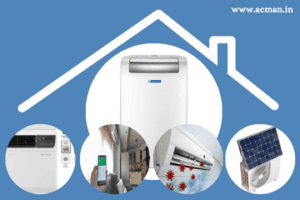Struggling with indoor air quality? Find out easy ways to Improve Indoor Air Quality and breathe better in every corner of your home.

Indoor air quality is vital for the family’s health, longevity, and functionality of building systems and equipment.
Poor air quality can lead to respiratory issues, headaches, and more. Changes in standards for air quality take time. However, there are some things you can do to improve the quality of the air we breathe.
This blog, “How to Improve Indoor Air Quality,” has eight clever tips for improving air quality. Please read and keep scrolling!
Indoor air quality and its effects on our health
Indoor air quality is a term used to describe the air quality inside a home or building. It’s the quality of air that we breathe at home or surroundings. The air quality index must be between 30 and 40 dB (A)..
The main factors leading to poor indoor quality are humidity, smoke, and pollutants. Poor air quality can affect our lives in the immediate and long-term.
- Immediate Effects
- Long-Term Effects
Immediate Effects:
Immediate effects could take effect soon after exposure to single or more pollutants. They can include nose, eyes, and throat irritation, headaches, dizziness, and fatigue. The immediate effects are usually temporary and treated by family doctors.
Long-Term Effects:
Long-term effects can occur after several years of exposure to bad air quality. These health outcomes include heart disease, respiratory diseases, and cancer. These are often destructive or even fatal. It is advisable to improve indoor air quality, even if no symptoms are visible.
READ ALSO: Common AC myths you must know, but do not follow
Tips to improve indoor air quality in your home
Air quality inside the house can be worse than outside, as we spend 60% of our time inside. You don’t need to panic, as we will give you a few tips on maintaining good indoor air quality. We will share all knowledge-based information on how to do it.
- Change your AC filter
- Air duct checking and cleaning.
- Control humidity in your home.
- Use cooking vents.
- Keep your rugs and carpets clean.
- Buy indoor plants to freshen the air.
- Air purifiers
- Ventilation
Cleaning or replacing air filter:

Air Conditioners help maintain pleasant temperatures throughout our day. By using Air filters in Aircon, we can capture and destroy air impurities. We need to clean or replace the filter regularly to improve air quality. Cleaning air filters will help to reduce dirt, dust, and other particles that can cause allergies and asthma problems.
How to clean the air filter yourself?
The ideal frequency should be around once in 30 days. The process is a straightforward one.
Step1: Remove the air filter from the Air Conditioner unit
Step 2: Move your fingers or toothbrush across the filter area to detach the mess
Step 3: Use pressure water for cleaning
Step 4: Rinse the filter
Step 5: Use cleaners to remove stains
Step 6: Rinse it once again
Step 7: Keep the filter in an upright direction to drain the excess water before reinstalling it
AC Duct checking and Cleaning
The air duct is responsible for adequately distributing cold air into your room. Over time, your AC ducts can turn up to dust cake shop if not maintained.
That is why today is the time for duct cleaning and improving indoor air quality! If you want to breathe easier, be healthier, and have an odor-free home this winter, duct cleaning is the solution.
How to clean the AC duct?
The heat pump system is a great way to kill fungus and bacteria in the duct section, but forced air systems using an air blower are another way to clean the duct from the inside. You have to appoint a professional to do the job.
Control of humidity in your home
Humid conditions can give rise to fungus, stale air, molds, and irritating pollutants. In India, specifically in cities like mumbai, prone to create high moisture in the air. This excess humidity creates an adverse effect on our health as well as on our furniture. Dehumidifiers can play a good role in killing excess moisture and reducing levels of pollutants.
Use cooking vents.
Gas stoves release harmful toxins such as carbon monoxide and nitrogen dioxide. The presence of cooking vents enhances the quality of the air inside. These vents allow smoke, fumes, and heat from the kitchen to escape, improving overall air quality.
Here are some reasons why cooking vents can be beneficial for indoor air quality:
- Vents release all smoke and fumes from appliances and fire out.
- Cooking vapors also contain particles that can cause respiratory problems. By removing these vapors through cooking vents, you are preventing them from being breathed in by residents of your home.
- Cooking smells also tend to linger in a house after meals.
Keep your rugs and carpets clean.
Your rugs and carpets are a big part of your home décor. Keeping them clean is essential to keep them looking their best. Not only will this help to keep your floors clean, but it will also add an extra layer of comfort and protection to the flooring.
There are three simple steps that you can take to keep your carpets and rugs clean:
- Try to vacuum them every week.
- Use a rug cleaner regularly to remove dirt, dust, or stains.
- Be sure to dry them off completely after each cleaning session.
Buy indoor plants to freshen the air.
Indoor plants can provide great beauty and function in any space. They help to clean the air, increase humidity levels, and add some much-needed color and life to a room. When selecting an indoor plant, it is crucial to consider the type of plant you would like, the care needed for that particular plant, and your home’s climate.
Air purifiers
Air purifiers typically comprise HEPA filters, or different types of filters, and a fan that draws in air and circulates it. When air passes across the filters, harmful pollutants and particles are removed, and clean air is pushed back into the room.
Air purifiers are effective in improving indoor air quality. Some studies have shown that they can reduce levels of pollutants by up to 90%.
Ventilation
There are a few things that you can do to improve the ventilation in your home. Ventilation will help reduce the amount of moisture and dust accumulating, which can cause several problems. Installing new windows and doors is one of the easiest ways to improve home ventilation. Opening up your home window will allow for more air and sunlight, which will help remove moisture and dust. You can also install fans and vents in specific areas of your home, such as the attic or basement, to help move air around more easily.
Conclusion
There are many things that you can do to improve indoor air quality. Some of the most important include: using a filter on your smoke and heat vents, keeping windows and doors closed when possible, using an air purifier, and avoiding tobacco smoke. These things can help improve your health and reduce the risk of asthma symptoms or other respiratory problems.
READ NEXT: How to reduce AC power consumption of your air conditioner


